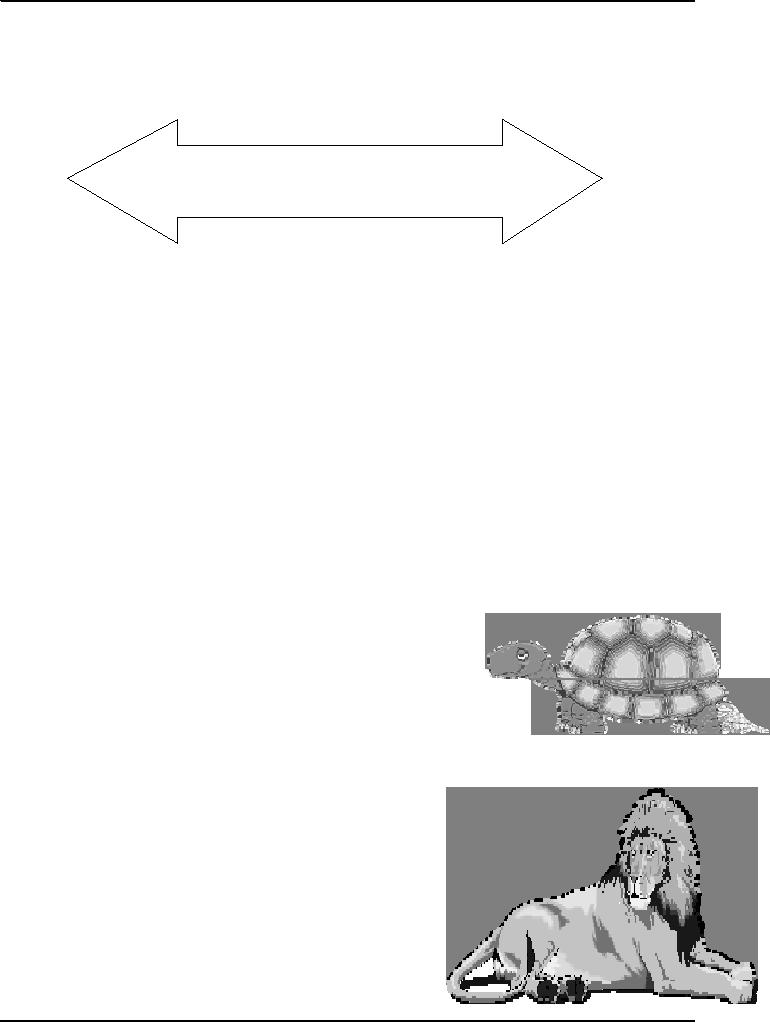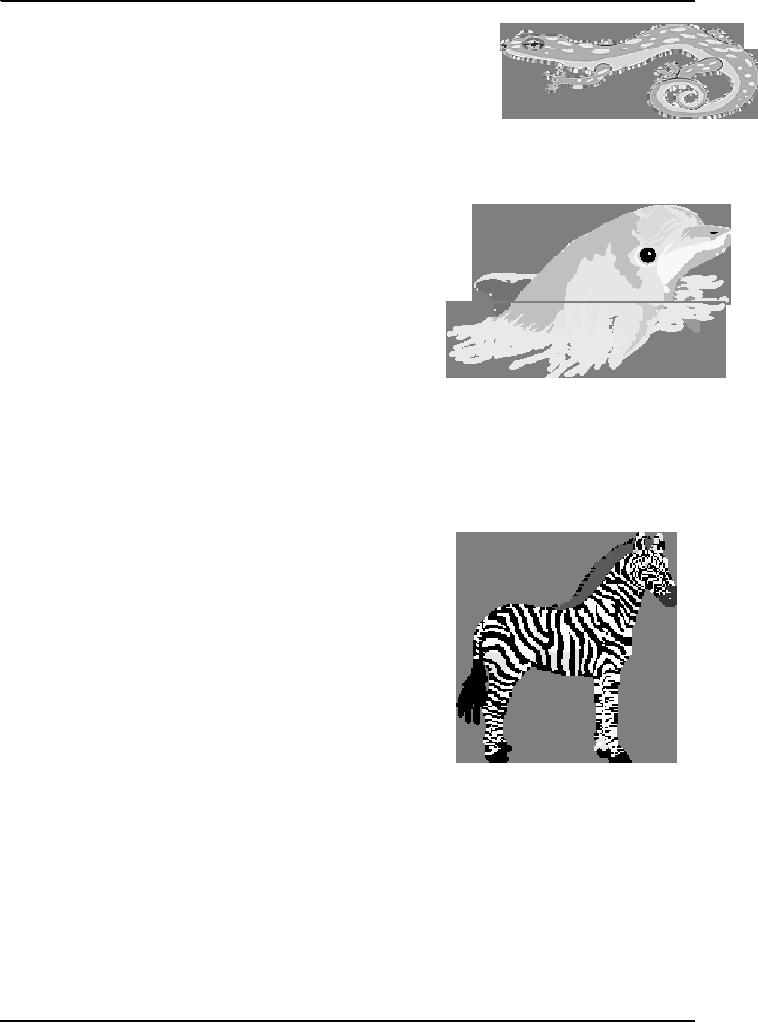 |

Conflict
Management HRM624
VU
Lesson
22
ASSESSING
THE NEGOTIATING STYLE I
Introduction
Conflict
is resolved in many ways.
Arbitration, mediation, adjudication, and
negotiation are some of
the
methods
of conflict management. We will
focus in this lecture on understanding
negotiation.
Negotiation
has different styles. The
choice of negotiation style
depends upon the nature of
conflict and the
nature
of disputants. Following are the
main points of our
discussion.
� Why
Deutsch's theory of cooperation and
competition doesn't tell the
whole story about
behavior
in a
conflict.
� How
it is possible to cooperate without being
taken advantage of.
� The
five negotiation
styles.
� Dual
concern model
Quotations
Let us
never negotiate out of fear,
but let us never fear to
negotiate.
John
Fitzgerald Kennedy (1917
- 1963) U.S. president.
Inaugural address as president of the
United States
Making
a billion dollars on a new deal is
not difficult for me.
Making it in a way that
gives me satisfaction is
the
real challenge.
Adnan
Khasoggi (1935 - ) Saudi
Arabian entrepreneur. Daily
Express (London)
Compromise
used to mean that half a
loaf was better than no
bread. Among modern statesmen it
really
seems
to mean that half a loaf is
better than a whole
loaf.
G. K.
Chesterton (1874
- 1936) British writer and
poet.
Negotiation
Negotiation
is one of three primary methods of
alternative dispute resolution. A dialogue,
discussion, or
written
exchange aimed at resolving a dispute or
consummating a transaction.
Virtually
all cooperative conflicts are resolved
through discussion and
negotiation.
Negotiation
style
It is a
strategy, not a
tactic.
Choose
a negotiation style that is
suitable for the conflict
you are dealing with.
Most of us have our
own
biases
about choosing different
styles of negotiation according to
one's strengths and
weaknesses.
Deutch's
Model
According
to Deutsch's model, conflict is either cooperative or
competitive. This approach is
advantageous
as it
shows the course of conflict rather
than the behaviors of individual
disputants or agents.
However
it fails:
(i) To
describe the self perception of
disputants, this is very important to
know.
(ii)
Cooperation and competition
are cyclical in nature and
Deutsch's model refers to conflict,
not the
positions of
individual disputants;
(iii)
According to this model, there is only
one form of cooperation. Actually
there could be different forms
of cooperative
strategies to resolve
conflict.
For
example `pushover' cooperation strategy
makes the other disputant cooperate
forcefully and joint
problem
solving strategy entails
looking after the interests of the other
party.
82

Conflict
Management HRM624
VU
Deutch's
Model
Cooperation:
High
Competition:
High
concern
for other
concern
for self
Dual
Concern Model
1. The
avoiding
style,
which represents a low level of
concern for both self
and other;
2. The
dominating
(or
competing) style,
which represents a high level of
concern for self and a
low level of
concern
for other
3. The
obliging
(or
accommodating) style,
which represents a low level of
concern for self and a
high level of
concern
for other
4. The
integrating
(or
collaborating
or
problem-solving)
style, which
represents a high level of concern
for both self
and
other
5. The
compromising
style, which
represents a moderate level of concern
for self and
other
Pareto-efficiency:
The
quality of a settlement agreement or
another social arrangement to
maximize
overall
value to the participants by allocating specific
resources to those who value
them most.
Avoiding
Style
A
turtle is a symbol for the
avoiding style because it
can avoid
everything by
pulling its head and
legs into its shell to
get away from
everyone.
A
turtle also chooses other
styles at times. It does not
always choose to
stay
in its shell, because it
would miss out on everything
from eating to
swimming.
Dominating
or competition style
It
represents a high level of concern
for self and a low level
of
concern
for other
A lion
can be a symbol of a competitive style.
The lion's roar helps
the
lion to satisfy its
interests. For example, if the lion's
family is
hungry
and needs food, the lion
may use its strength
and loud roar
to get
the food because it is important
for the family.
However,
the lion can also choose to
use a compromising or
accommodating
style when playing or resting with a
lion cub.
83

Conflict
Management HRM624
VU
Obliging
or accommodating style
A
chameleon is a symbol of the
accommodating style because it
changes its
color
to match the color of its
environment. By changing its
color to
accommodate
its surroundings, the chameleon
fits quietly into its
environment.
Although
the chameleon may always
change its color to
accommodate its surroundings, it
may
choose
other styles when it is hunting
for food, taking care of
its young, or hiding from
enemies.
It
represents a low level of concern
for self and a high level of
concern for other
Integrating
or cooperative style
It
represents a high level of concern
for both self and
other.
A
dolphin usually chooses a cooperative
problem-solving style. Dolphins
use
whistles
and clicks to communicate
with each other to catch
food
cooperatively
and to summons help. For
example, when a dolphin is
sick
or injured, other dolphins
will help it to the surface so it
can
breathe.
Although
the dolphin usually chooses to be a
cooperative problem solver, it can
also choose other
styles
depending on the
situation. For example, if a dolphin
has a baby and a shark is in
the area, the dolphin
will
choose
to use a competitive style to
deal with the shark.
Continuing to use its
favorite style of cooperation
would
greatly endanger the life of the
baby dolphin.
Compromising/style
A
zebra can be a symbol for
the compromising style.
A
zebra's unique look seems to indicate
that it didn't care if it
was a black horse or a
white
horse,
so it "split the difference" and
chose black and white
stripes.
However,
a zebra may not choose a
compromising style
for
all things. A zebra may
choose a cooperative
or
competitive style like the
dolphin or lion depending on the
situation.
It
represents a moderate level of concern
for self and
other
84
Table of Contents:
- INTRODUCTION TO CONFLICT:Dispute, Legal Dispute, Call the police
- DISPUTE RESOLUTION 1:Positive affect in Negotiation, Alternative Dispute Resolution
- DISPUTE RESOLUTION II:Adjudication, Litigation, Mediation-Arbitration
- PRECONCEPTIONS ABOUT CONFLICT I:Pedagogical development, Pressures against Innovation
- PRECONCEPTIONS ABOUT CONFLICT II:Cultural beliefs about interpersonal conflict, Why strategies of change fail
- CONFLICT DIAGNOSIS:Who Needs to Know About Conflict Diagnosis?, Steps in Conflict Diagnosis
- RECURRENT THEMES IN CONFLICT DIAGNOSIS I:The Seven Steps of Social Behavior, Seven steps to diagnose conflict
- RECURRENT THEMES IN CONFLICT DIAGNOSIS II:Themes of Conflict Diagnosis
- DESCRIBING THE CONFLICT I:Description of Conflict, Identifying Interpersonal Conflict
- DESCRIBING THE CONFLICT II:Step 1 for Conflict Diagnosis, interpersonal or intrapersonal
- SOURCES AND CAUSES OF CONFLICT I:Main Sources of Conflict, Discussing major sources of conflict
- SOURCES AND CAUSES OF CONFLICT II
- INTEREST ANALYSIS I:Analyzing your interests, Analyzing the other disputant’s interests
- INTEREST ANALYSIS II:What are interests?, Tips for Interest Trees
- INTEREST ANALYSIS II:Principles and values, Basic Human Needs
- ASSESSING THE CHARACTER OF THE CONFLICT I, Premises of Deutsch’s Theory
- ASSESSING THE CHARACTER OF THE CONFLICT II:Techniques to transform competitive conflict into cooperative
- TRUST AND ITS SIGNIFICANCE I:What is Mistrust,Trust and business,Three levels of trust
- TRUST AND ITS SIGNIFICANCE II:Advantages of high trust level, Building of trust
- ASSESSING IMPEDIMENTS TO RESOLVE THE CONFLICT I:Motivation to seek vengeance, Mistrust
- ASSESSING THE IMPEDIMENTS TO RESOLVING THE CONFLICT II:Disempowered Disputant, Unpleasant Disputant
- ASSESSING THE NEGOTIATING STYLE I:Dual Concern Model, Dominating or competition style
- ASSESSING THE NEGOTIATING STYLE:Dual Concern Model, Tactics Used In Integrating
- ASSESSING POWER AMONG DISPUTANTS:Conflict and Power, Kinds of power in the Relationship Domain
- ASSESSING POWER AMONG DISPUTANTS II:Sources of Relationship Power, Context and Power
- POWER, CONFLICT, AND BATNA III:Role of Third Party in BATNA, Dealing with Power Imbalance
- STEREOTYPES, DIVERSITY, AND CONFLICT I:Stereotyping, Stereotyping in Interpersonal Conflict
- STEREOTYPES, DIVERSITY, AND CONFLICT:Categories of Diversity Issues, Seven Mental Processes to Prove Stereotypes
- STEREOTYPES, DIVERSITY AND CONFLICT III:Individual Difference and Social Category, Cultural differences in values
- MEDIATION I:When is mediation required, Processes Related to Mediation, Product of Mediation
- MEDIATION II:Important distinguishing factors, More Advantages and Disadvantages of Pure Mediation
- ADVANTAGES AND DISADVANTAGES OF MEDIATION I:Efficiency Consideration, Conflict Management and Prevention
- ADVANTAGES AND DISADVANTAGES OF MEDIATION II:Quality of Consent, Effects on the parties to mediation
- PROCESS OF MEDIATION:Stages of Mediation, Facilitative tactics in mediation
- LAW AND ETHICS OF MEDIATION I:Characteristics of mediation, Confidentiality
- LAW AND ETHICS OF MEDIATION II:Role of ethics in mediation, 8 Dimensions of Ethics in Mediation
- ARBITRATION I:Ways to Resolve Conflict, Advantages of Arbitration, Disadvantages of Arbitration
- ARBITRATION II:Varieties of Arbitration, Process of Arbitration, Contents of Arbitration Act
- NON BINDING EVALUATION:Disadvantage, Varieties of Non-binding Evaluation
- NON BINDING EVALUATION II:Varieties of Non-binding Evaluation, Advantages and disadvantages of Non-binding Evaluation
- MIXED AND MULTIMODAL DISPUTE RESOLUTION:Six System Design Principles, Extensions of Dispute Systems Design
- POWER TOOLS AND MAGIC KEYS I:Introduction, Necessity of conflict diagnosis, Using conflict diagnosis
- POWER TOOLS AND MAGIC KEYS II:Proposed Contents of a Clients’ Interview, Impediments to use facilitative mediation
- PANCHAYAT, LOCAL GOVERNMENT SYSTEM, AND ADR, Definitions of Panchayat, Definition of Jirga
- SUMMARY AND MESSAGE OF THE COURSE:Definitions of conflict, Negotiation, Meditation, Adjudication